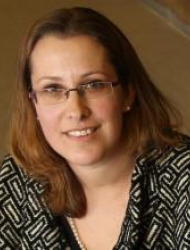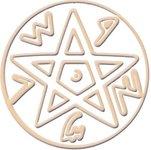
Senior Lecturer in the Institute of Archaeology, Department of Classical Archaeology.
Research interests
Hellenistic and Roman art and architecture, the construction projects of the Hasmonean kings and Herod the Great, Idumeans, Jerusalem through the ages, funerary art.
Teaching
Introduction to Greek Archaeolog; Introduction to Roman Archaeology; Herodian Art and Architecture; Hasmoneans from an Archaeological Perspective; Josephus and the Archaeological Realia; Herod and Other Client Kings; Alexander the Great and his Legacy; Egyptomania; Introduction to the Archaeology of Cyprus; Fashion in the Ancient World; Rome and Jerusalem from Augustus to Titus; the Classical Architectural Decoration.
Ongoing Projects
- Horvat Midras Excavations: Since 2015, Dr. Peleg-Barkat is leading a research project examining processes of acculturation, occupation, migration and resistance in the Judean Lowlands during the Hellenistic and Roman periods, whose focus is a survey and excavation at the site of Horvat Madras, within the boundaries of the Adullam Grove Nature Reserve. The remains of residential buildings, agricultural installations, hideout complexes, tombs and funerary monuments, a Roman temple and a Byzantine church have been uncovered at the site. The findings enable the reconstruction of an Idumean settlement in the Hellenistic period that was abandoned with the Hasmonean conquest at the end of the second century BCE. The site was resettled about a century later as a prosperous Jewish large village with affluent families. This settlement was abandoned following the Bar Kokhba revolt, in which the residents took part as is evidenced by the Revolt coins and hiding complexes and was later settled by the Roman authorities with non-Jewish population, which gradually converted to Christianity during the Byzantine period. The excavation is co-directed by Prof. Greg Gardner of the University of British Columbia in Vancouver, Canada. Horvat Midras Facebook Page
-
The Ophel Excavations in Jerusalem: As of 2023, Dr. Peleg-Barkat has joined the expedition headed by Prof. Uzi Leibner of the Institute of Archaeology at the Hebrew University, which is conducting excavations at the foot of the Southern Wall of the Temple Mount in Jerusalem. The excavation focuses on the remains of a monumental ashlar structure that were discovered under a neighborhood built in this area during the Byzantine period. The excavation in this area is part of a broader project that deals with the analysis of the Ophel as a space that absorbs crowds in the context of the pilgrimage in the late Second Temple period. The Ophel Excavation Facebook Page
Previous projects
- En Gedi Oasis Excavations: Since 2014, Dr. Peleg-Barkat has joined Dr. Gideon Hadas in running the excavation expedition in the Oasis of En Gedi. The excavation focused on the Byzantine village north of the synagogue. She plays a central role in the preparation of the excavation report, which also includes the publication of the findings of the Hadas excavations in the village from the Second Temple period ("The Quarry") and the excavations of Nahman Avigad from the early 1960s in the Nahal David caves. En Gedi Oasis Website
- Ramat Hanadiv (Horvat ‘Eleq) Excavations: From 2007 to 2010, Dr. Peleg-Barkat conducted an excavation at Horvat ‘Eleq in Ramat Hanadiv together with Dr. Yotam Tepper of the Israel Antiquities Authority. The site, which had previously been excavated by Yizhar Hirschfeld and identified as the palace of one of Herod's relatives, was reinterpreted following the excavations that revealed that the site’s fortification wall should be dated to the fourth century BCE and that this wall ceased to be used as an external fortification as early as the 3rd century BCE, when various structures were built abutting the wall from the outside.
Selected publications
- Peleg O., 2003. “Roman Intaglio Gemstones from Aelia Capitolina,” Palestine Exploration Quarterly 135/1, pp. 52–67.
- Peleg-Barkat O., 2011. “The Introduction of Classical Architectural Decoration into Cities of the Decapolis: Hippos, Gadara, Gerasa and Scythopolis,” ARAM 23, pp. 425−445.
- Peleg-Barkat O., 2012. “The Relative Chronology of Tomb Façades in Early Roman Jerusalem and Power Displays by the Élite,” Journal of Roman Archaeology 25/1, pp. 403−418.
- Peleg-Barkat O., 2014. “Fit for a King: Architectural Décor in Judaea and Herod as Trendsetter,” Bulletin of the American School of Oriental Research 371, pp. 141−161.
- Peleg-Barkat O. and Chachy R., 2015. “The Architectural Decoration of the Mausoleum,” in: Porat R., Chachy R. and Kalman Y. (eds.), Herodium Final Reports of the 1972–2010 Excavations Directed by Ehud Netzer Volume I: Herod’s Tomb Precinct, Jerusalem: Israel Exploration Society, pp. 314–348.
- Peleg-Barkat O., 2017. The Temple Mount Excavations in Jerusalem, 1968−1978 Directed by Benjamin Mazar, Final Reports, vol. V: Herodian Architectural Decoration and King Herod’s Royal Portico [Qedem series 57], Jerusalem: Institute of Archaeology, Hebrew University of Jerusalem.
- Peleg-Barkat, O., 2019, Herod’s Western Palace in Jerusalem: Some New Insights, Electrum 26: 53-72.
- Peleg-Barkat O., 2020. “Art in Second Temple Period Jerusalem,” in: Gafni I., Reich R. and Schwartz J. (eds.), The History of Jerusalem – Second Temple Period 332 BCE–70 CE, vol. II: Material Culture, Jerusalem: Yad Ben Zvi, pp. 527-568. (Hebrew)
- Peleg-Barkat O., 2021. “Herodian Art and Architecture as Reflection of King Herod’s Many Faces,” in: Blömer M., Riedel S., Versluys M. J. and Winter E. (eds.), Common Dwelling Place of all the Gods, Münster: Franz Steiner Verlag (Oriens et Occidens, TN 12925), pp. 409–438.
- Antonio Dell’Acqua, Peleg-Barkat O., 2021. The Basilica in Roman Palestine. Adoption and Adaptation Processes, in Light of Comparanda in Italy and North Africa, Rome: Edizioni Quasar.
Graduate students
M.A. students
- Evie Gassner
- Asaf Ben Haim
- Liat Oz
- Reut Dadon-Kozak
- Tal Rogovski
- Michal Muniz
- Dror Cohen
- Hila Heksher
- Reni Shen
Ph.D. students
- Naama Lena Sharabi
- Meidad Shor
- Asaf Ben Haim
Post-doctoral students
- David Gurevich
- Karni Golan
- Antonio Dell’Acqua
- Vivian Laughlin

